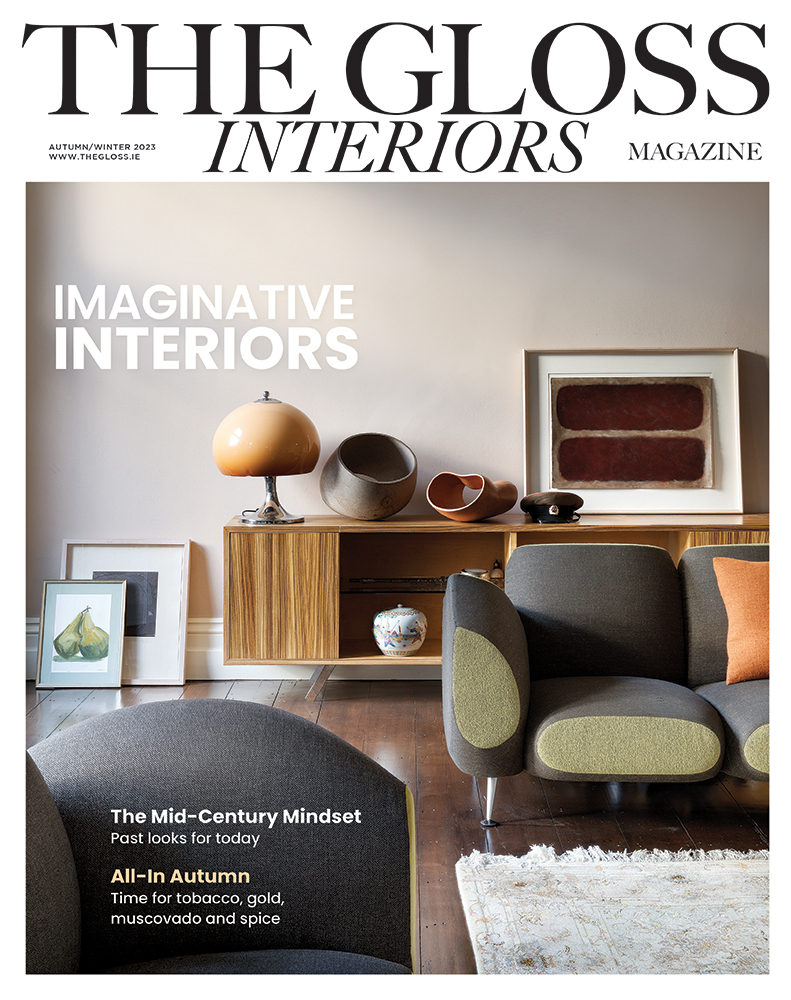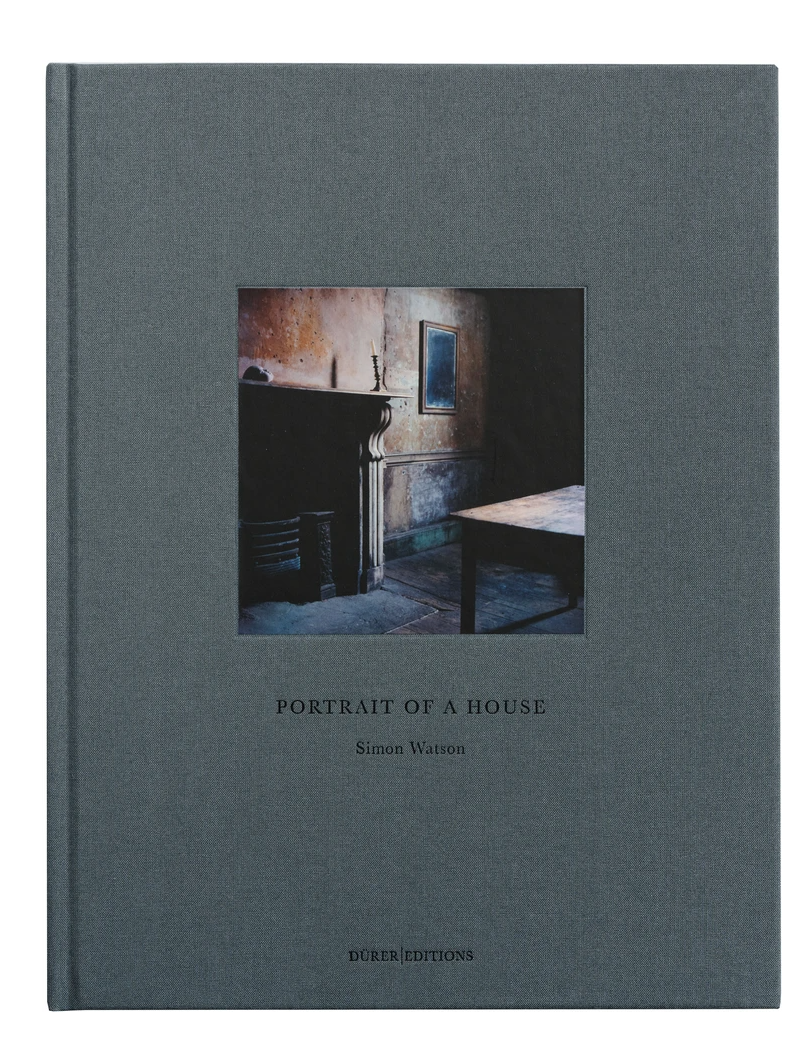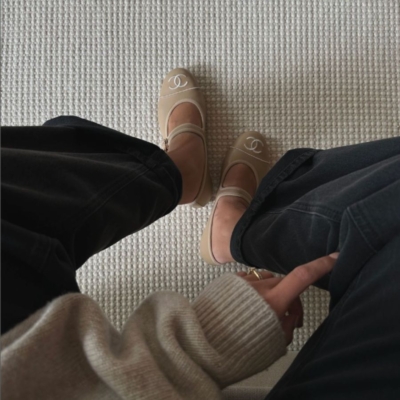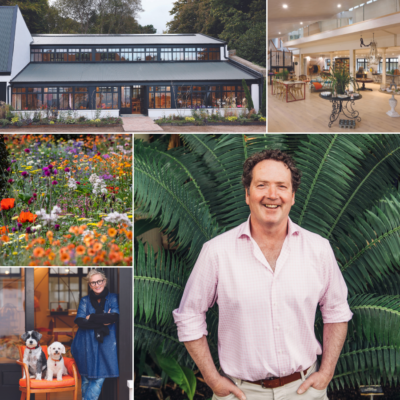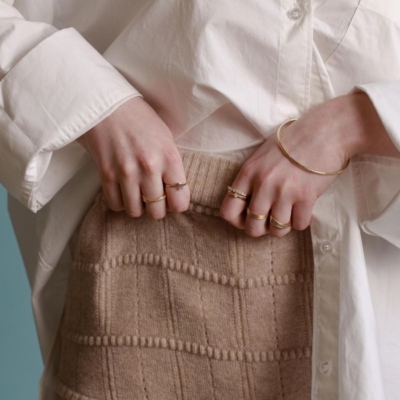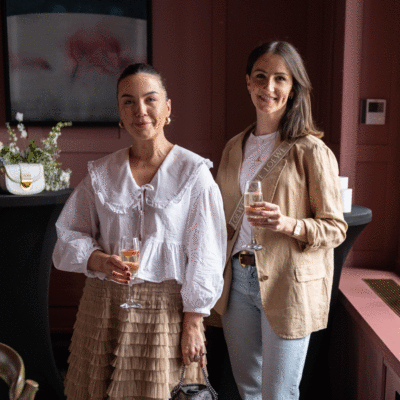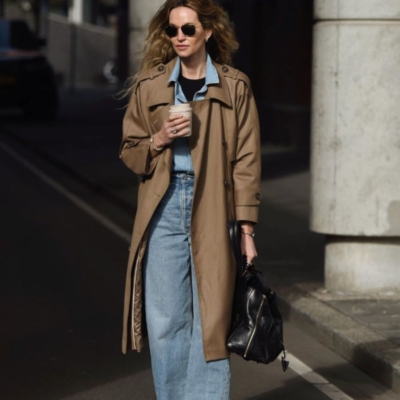For over 30 years, contributing photographer to THE GLOSS and THE GLOSS INTERIORS Simon Watson has exhibited his photographs in Europe and the US, including solo shows at the late Richard Anderson Gallery in New York and the Auschwitz Museum in Poland. More recently he has shown his paintings at the Galerie Rideau de Fer in France. His work is included in museums, public and private collections worldwide. Watson has been a regular contributor to The New York Times T Magazine, W Magazine, Vogue, Vanity Fair and other titles worldwide. His recent book, The Lives of Others, discussed below, was published by Rizzoli in 2020. His latest book, Portrait of a House, explores an 18th-century Georgian house on Dublin’s storied Henrietta Street which has a history of transformation, once the grand city home of wealthy merchants, then an inner-city tenement dwelling. Watson’s photographs, taken over a period of several years, reveal a quiet melancholy and the slow passing of time. The work is intended to be a poetic and intimate portrait. Published by Dürer Editions (Watson’s own art imprint co-founded with John Power and Richard Power), a first edition (of 1,000 copies) is available at €45, as are collector’s editions and prints. An exhibition of these beautiful photographs is on at Kevin Kavanagh Gallery in Dublin 8 and runs until October 31. Here, Watson reflects on his past, describing how it all began in Dublin …
“I have an early memory. I was standing at a bus stop. I think it was on Leeson Street. A terrace of Georgian houses stood behind me. Grey, grubby and dull, dirty yellow or red bricks, stained with soot and lead. Looking through one window I saw a room lit with a dull green fluorescent strip light attached to an 18th-century plaster ceiling, in what can only be described as an act of vandalism. An old beige rotary telephone and a well-thumbed Yellow Pages sat on top of a marble fireplace mantel. Looking up I saw enormously tall sash windows with the thinnest of glazing bars, so elegantly and effortlessly supporting the distorted and wavy panes of glass. Gentle and soft light from the rear windows illuminated the dust that hung in the air, creating a melancholic and theatrical stage. I saw the past and its beauty. I saw the lingering presence of the lives that once inhabited the space.”
Simon Watson grew up in Dublin and studied film after school. He also painted for a time before concentrating on photography. He has been a photographer for 30 years, many of those years spent in New York. Now he lives in Dublin but travels widely, documenting as he describes it, “people and their lives and their habitats”. He didn’t have an inkling when he looked through that window on Leeson Street that as a young adult he would become a photographer but, as he says, “that is what has become of me”.
“I started off like many: a little lost, maybe a little unsure of myself, and probably a little too carefree. I certainly didn’t know much about anything. But I always knew I was visually sensitive. For me, one factor stands out: the act of looking. I can’t really remember not looking. My parents were both involved in the arts, and with my older brother and sister, they dragged us around galleries and 18th-century squares on weekends. In these circumstances one can’t really help but look. ‘Doric or ionic?’ my father would randomly quiz. I suppose it does rub off.
“Photographing houses is the process of opening an aperture, a window, so the viewer might have a better understanding of the inhabitant; it is the act of creating an intimate portrait.”
Editor and writer James Reginato has for years worked with Watson and calls him both friend and colleague. He describes those joint assignments for magazines as “among the most rewarding experiences” of his career, not just because of the calibre of the shoot they would deliver for the magazine, but for the sense of adventure and discovery each shoot would bring.
“In those pre-digital and gloriously glossy days when our careers were new, landing with Simon at Fiumicino, or whatever airport it might be, was always the start of a great adventure,” says Reginato. “Long before Google Maps, I’m sure I got us lost countless times. We sometimes drove in circles around half of Tuscany before we found that castello or villa.

Simon Watson, photographed by David Fernandez.
“Wherever we went, while I might have been the navigator during the day, Simon usually found the place for dinner. He could always be counted on to pinpoint the most delicious trattoria, pub, or given our druthers, more extravagant gastronomic spot. We would savour the fare, as well as the triumphs of the day.
“Irish though he is to the core, I’ve sometimes felt there is something a bit Dutch about Simon. He has an understanding and a command of light that often reminds me of Vermeer or Rembrandt. His pictures exude gravity and solemnity but at the same time there is always great charm. During his New York years, he grew a great deal as an artist, as he absorbed everything the city offered. When we flew to Ireland – most memorably and magically to shoot Luggala in Co Wicklow and Clandeboye in Co Down – it was especially gratifying to see him focus his internationally-honed eye back on his native land.”
Another editor and friend Tom Delavan, concurs. In 2008 he was the editor-at-large at an interiors magazine when he spent two days at Simon’s house on Cranberry Street in Brooklyn Heights in New York. Watson wasn’t there but his house gave all sorts of clues as to the type of person he was. “The architecture was early 19th-century; there were colourful Berber rugs, books on early Italian art and 20th-century Belgian painting, Egyptian artifacts and contemporary art. This was clearly the home of someone who was well-travelled and well-read, someone with not only a great eye but also a great life.”
The business of photographing interiors is oddly intimate, and a preparation for the portrait which follows, says Delavan. “By the end of the day, we have spent more time in our subjects’ bedrooms and bathrooms than almost anyone. We know what they read, what they eat, how they make their beds, if they are tidy, what music they listen to. And that is even before the portrait is taken. So when Simon does turn his attention to the homeowner, this person is not a complete stranger. This is how he is able to capture them better than someone who shows up and starts shooting cold.”
Well-informed, well-read, interested and endlessly curious, Watson can put any subject at ease. “Taking pictures is so natural to him that he can hold up his end of a lively conversation while plying his trade,” says Delavan. “So we chat, about the house we’re in, the homeowner, politics, real estate, our own lives. I learned of his terrific sense of humour when we were slowly edging our way down a treacherously steep hill in a rental car in Gaeta, Italy. Coming into one sharp hairpin bend, he turned to me and said in his best Sean Connery accent, ‘Hang on to your knickers, Mrs Moneypenny’.”
Delavan attests to Watson’s brilliant manipulation of light. “He almost never uses strobes or softboxes or any number of tricks and tools other photographers employ but knows how to manipulate even the smallest amount of daylight to great effect.” Shutters are his tool of choice, canted at seemingly random angles to transform spaces into something dramatically beautiful, as in Twelve Henrietta Street, one of the houses that best captures Watson’s skill. “A house has a life of its own and Simon prefers those that have been lived in, where the owners love and care for it but also allow it to fade and crack and shift and breathe.”
Capturing the beauty and the charm of an interior or the essence of a person is not a question of pointing and shooting. As Delavan says, “Simon is the visual equivalent of a great listener, and really seeing is a sign of respect and care. His photographs are the manifestations of the caring way in which he moves through the world and processes what he sees.”

ALICE LIECHTENSTEIN Schloss Hollenegg, Austria, 2017
“Alice, standing in the blue winter light. Tea on her stove, serving cake before the work begins. Outside the window of her warm and cosy kitchen, snow is falling. I don’t want to leave the room. I’m a little intimidated by what’s out there. In Hollenhegg Castle there are literally hundreds of rooms – so many that Alice, who lives there, claims there are rooms still waiting to be discovered. This enormous castle swallowed me up. Yet Alice carved out a tiny slice and transformed it into a living and breathing home for her husband and their two children.”

GARECH DE BRÚN Luggala, Co Wicklow, 2002
“In the summer of 2002, I photographed Garech de Brún at Luggala, an ancestral home of the Guinness family in Co Wicklow. For me there was some nostalgia involved. As I boy I had on occasion hopped over the grey granite walls and gone skinny-dipping in the lake we all called “The Guinness Lake”.

“I had never met Garech until that summer: he was kind and warm and was a generous host. He put my crew up in a beautiful Georgian house on the far side of the estate. Garech graciously hosted a welcome party in our honour. He invited writers and poets, painters and filmmakers. All old and dear friends, gathered together in midsummer; beside the lake and under the vibrant green hills.”

THE DUCHESS OF ALBA Palacio de Liria, Madrid, 2003
“We were late. The taxi driver had no idea where he was going and neither did we. James Reginato was understandably freaking out. We had a portrait to take and we couldn’t be late. But we were late, very late. Arriving at the Palacio de Liria to photograph the Duchess of Alba was one of the most stressful moments of my career. It was hot in Madrid and my freshly laundered shirt was beginning to stick to my back. Upon arrival, we were sharply rebuked for our tardiness and told that “La Duquesa” could only see us now for exactly one minute. Oh dear, I couldn’t concentrate. I was surrounded by Old Masters: Perugino, Titian, Velazquez, El Greco, Goya and Rembrandt, all looking down on me. I set up the photograph; my assistant loaded the film. The stress was building. My shirt was drenched. The Duchess entered the room and a calm descended. We said our hellos. I positioned her. I shot a Polaroid, four rolls and eight sheets of film in exactly 60 seconds. We said our goodbyes. She left the room, never to be seen again.”

ALASTAIR MC ALPINE Puglia, Italy, 2004
“The first time I met Alastair McAlpine, he unbuttoned his shirt and proudly showed me the enormous scar; running in a zip-like fashion from the top of his torso to his navel. “The IRA tried to kill me,” he informed me. McAlpine had been Margaret Thatcher’s righthand man. He had been asleep in his bed when the IRA bombed the Grand Hotel in Brighton where he, the cabinet, and a number of senior party members were staying for the party conference. Five people were killed. McAlpine escaped injury. The scar on his torso was left from triple bypass surgery years later; unrelated to the terrorist attack. After a colourful career as an industrialist and businessman, McAlpine decided to be more ‘casual about life’. He sold his homes in London and Paris and moved to the Puglia region of southern Italy. With his third wife Athena Malpas, he bought and renovated a beautiful 500-year-old monastery, somewhere between the white baroque city of Lecce, and the quiet seaside town of Otranto.They ran it together as a bed-and breakfast until his death.”
Extracted from The Lives of Others, Sublime Interiors of Extraordinary People, by Simon Watson, published by Rizzoli, out now. Simon Watson’s new exhibition Portrait of a House, an exploration of an 18th-century Georgian house on Dublin’s storied Henrietta Street, will run at the Kevin Kavanagh gallery until October 30. Watson’s new book of the same name can be purchased here.
LOVETHEGLOSS.IE?
Sign up to our MAILING LIST now for a roundup of the latest fashion, beauty, interiors and entertaining news from THE GLOSS MAGAZINE’s daily dispatches.

